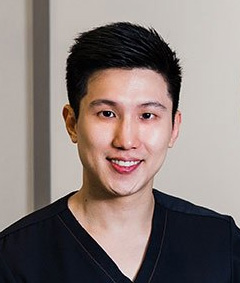Pico lasers have been available for more than 5 years.
It is a good time to review the literature to see if pico lasers have truly delivered what’s been promised – a safer and better treatment compared to older technology.
We also seek to review if there were long-term side effects that were not known before.
Pico lasers were initially used in tattoo removal, to optimize efficacy and reduce side effects with nanosecond lasers. Subsequently, they were found to be effective in the treatment of pigmentary disorders, acne scarring, and photoaging.
Let’s find out more.
Contents
Pico laser’s advantage
Pico laser’s predecessor is known as the Q switch laser or nanosecond laser. Compared to nanosecond technology, the pico laser is able to emit shorter pulses of laser energy which translates to increased effectiveness and reduced side effects.
Q-switch laser is not a bad technology. It is just that doctors and scientists are always looking to provide better results. Q switch nanosecond lasers has been a very successful technology due to its capability of delivering short pulses of laser energy in nanoseconds. The theory of selective photothermolysis is the primary principle for selective removal of tattoos and pigmentations. Sufficient amount of energy is delivered to the target area in pulse duration shorter than the thermal relaxation time, reducing the risk of thermal damage to the surrounding tissue. By further reducing the pulse duration to picoseconds, the risk of thermal damage and side effects are further reduced.
The use of Pico laser in resurfacing the skin or rejuvenation purpose induces Laser-induced Optical Breakdown bodies (LIOB) in the upper dermis, leaving the superficial layer of skin intact. The area with LIOB damage will undergo a healing process that remodels the collagen and elastin in the area. As this process does not ablate the skin like in the use of CO2 lasers and erbium lasers, the risk of PIH is markedly decreased.
Pico laser for pigmentation and melasma
Although Q-switched lasers have been considered to be the standard treatment for pigmentary conditions, the risk of PIH is higher, especially in Asians as we have darker skin tone. The risk of PIH is significantly lowered with the use of pico lasers.
In the treatment of more superficial pigmentation like freckles and solar lentigines, studies have shown that picosecond laser is safe and effective for darker skin type in Asians.
References:
https://www.ncbi.nlm.nih.gov/pubmed/31115070
https://www.ncbi.nlm.nih.gov/pubmed/30357871
As we know, multiple modalities of treatment should be considered in the treatment of melasma.
In a paper published in 2019, reviewing the treatment modalities published from 2009-2019, 42 studies support the use of Q-switched, picosecond-laser, pulsed dye laser as treatment for melasma, showing good benefits. (https://www.ncbi.nlm.nih.gov/pubmed/31603285)
The use of pico laser has demonstrated faster and better clearance of melasma compared to Q-switch laser. (https://www.ncbi.nlm.nih.gov/pubmed/29732522)
Mottled hypopigmentation reported from the over use of Q-switched lasers in the treatment of melasma is not reported for picolaser (https://www.ncbi.nlm.nih.gov/pubmed/31413475).
Many recent studies within the last 5 years concurred that that the pico laser has shown increasingly positive results and low incidence of adverse effects further substantiates picosecond laser efficacy for a variety of dermatologic uses.
References:
https://www.ncbi.nlm.nih.gov/pubmed/30702447. https://www.ncbi.nlm.nih.gov/pubmed/32282094
Pico laser is effective for tattoo removal
The use of pico laser in tattoo removal treatment is better established as a superior treatment to nanosecond lasers. Ink particles are broken down to a greater extent with picosecond lasers and this is evident when the treated area is examined under the electron microscope. This allows fewer treatment, less side effects and faster recovery. (https://www.ncbi.nlm.nih.gov/pubmed/31729066)
Pico laser is effective to treat Acne Scars
The gold standard resurfacing laser for acne scars is CO2 lasers. However, the ablative nature is associated with more downtime and higher risk of PIH.
Pico laser has shown to be effective and safe in treating acne scars in Asian type skin with minimal downtime and it is recognized as a treatment for acne scar in the Americal Journal of Clinical Dermatology.
References:
https://onlinelibrary.wiley.com/doi/full/10.1002/lsm.23218
https://www.ncbi.nlm.nih.gov/pubmed/31483065
https://www.ncbi.nlm.nih.gov/pubmed/31327129
Picosecond laser has also shown to be as effective as Erbium:yag laser in reducing acne scarring. (https://www.ncbi.nlm.nih.gov/pubmed/31646393)
Pico laser improves wrinkles
Pico lasers also found to be effective in reducing facial wrinkles with minimal pain downtime and complications in Asian skin.
References:
https://www.ncbi.nlm.nih.gov/pubmed/29883215
https://www.ncbi.nlm.nih.gov/pubmed/30152538
Effects of picosecond laser in the treatment of wrinkles is comparable to quasi-long-pulsed 1064-nm Nd:YAG laser. (https://www.ncbi.nlm.nih.gov/pubmed/31734761)
Pico lasers may not produce results comparable to that of CO2 lasers, but is still a treatment worth considering as it has lesser downtime, lower risk of complications and lesser pain when compared to other resurfacing treatments available in the market.
Summary
In summary, the review of literature has led us to a conclusion. Pico lasers have over the course of 8 years, proven that it has surpassed the nanosecond laser technology in treating several dermatological conditions like pigmentation, tattoo removal, acne scars and wrinkles.
With that said, not all picosecond laser machines are made the same, and not all users are equally trained and experienced, and not all pigmentations should be treated with lasers.
To get the best results, consult an experienced doctor who demonstrates a good understanding of dermatological conditions, skin anatomy, stays updated to the latest developments and has plenty of experience.





